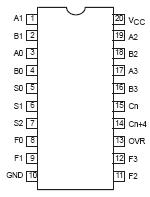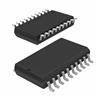74F382: Features: • Performs six arithmetic and logic functions• Selectable Low (clear) and High (preset) functions• Low-input loading minimizes drive requirements• Carry output for ...
floor Price/Ceiling Price
- Part Number:
- 74F382
- Supply Ability:
- 5000
Price Break
- Qty
- 1~5000
- Unit Price
- Negotiable
- Processing time
- 15 Days
SeekIC Buyer Protection PLUS - newly updated for 2013!
- Escrow Protection.
- Guaranteed refunds.
- Secure payments.
- Learn more >>
Month Sales
268 Transactions
Payment Methods
All payment methods are secure and covered by SeekIC Buyer Protection PLUS.

 74F382 Data Sheet
74F382 Data Sheet







